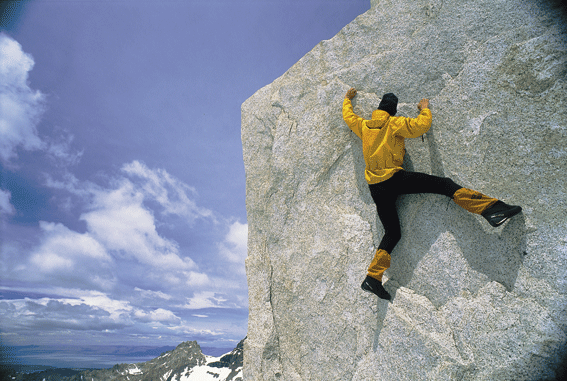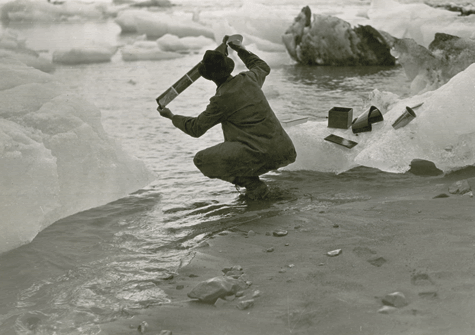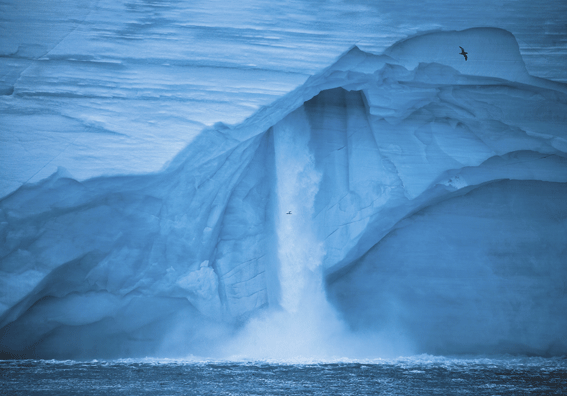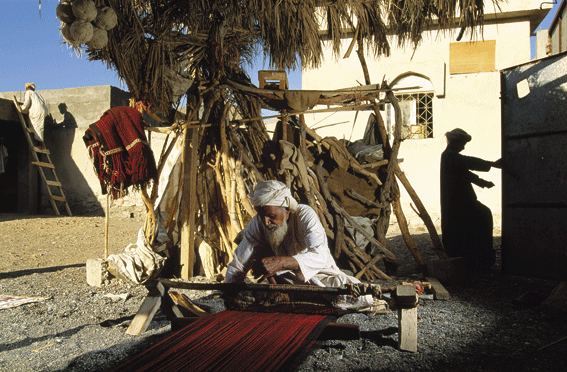

 |
| Rock Climbing A rock climber using the freestyle technique called bouldering takes on a sheer rock wall in Argentine Patagonia>s Paso Superior. Patagonia's thousands of breathtaking Andean peaks attract mountaineers from novice to world class. Photograph: Bobby Model |
 |
 |
| Photographer Ingenuity On a 1910 National Geographic Society expedition, a photographer crouches by the shore of Yakutat Bay, Gulf of Alaska, to wash his film in the seawater. Faced with limited technology and assignments in remote places, National Geographic’s early photographers devised ingenious methods to produce the best images. Photograph: O.D. Von Engeln |
Svalbard
Summer meltwater gushes down ice cliffs where the Austfonna ice cap meets the sea in eastern Svalbard. The walls tower more than 100 feet above sea level and plunge some 300 feet below. Glacial ice covers more than half the terrain of this archipelago, which lies 400 miles north of the Norwegian mainland. Vikings may have found these far-flung islands as early as the 12th century. Whalers, scientists, and Arctic explorers have used them as a base. But only 2,500 people call Svalbard home. Photograph: Paul Nicklen |
 |
Wanted Moon Rocks By Jeremy Berlin Earth may get more moon rocks in 2018, when NASA plans a manned lunar landing. Until then, as scientists and collectors know, supply and demand are worlds apart. The only sources? Rare lunar meteorites, soil from Soviet probes and the 842 pounds of rubble carted back by Apollo astronauts from 1969 to 1972. NASA keeps most of its 1,500-rock cache in Houston, lending out 400 samples a year for research and display. Presidents Nixon and Ford gave pea-size «goodwill» slivers to 134 countries, 50 states and Puerto Rico. For other interested parties, auctions can be a legal option if the rock for sale isn’t U.S. government property. At Sotheby’s in 1993, a Soviet sample fetched $442,500. On eBay, a meteorite cut can go for $40 to $100,000, depending on size, quality and authentication. Then there’s the black market. Joseph Gutheinz, a former NASA investigator, says Apollo rocks that have vanished over the years can turn up with $5 million tags. «They simply mean more and more as the years go by.» |
 |
Wadi Ghul Rugmaker Nimble fingers of a rugmaker dance over his loom in Wadi Ghul, a center of traditional weaving. With many rugmakers growing old, government-sponsored weaving centers strive to preserve the craft. Photograph: James L. Stanfield |